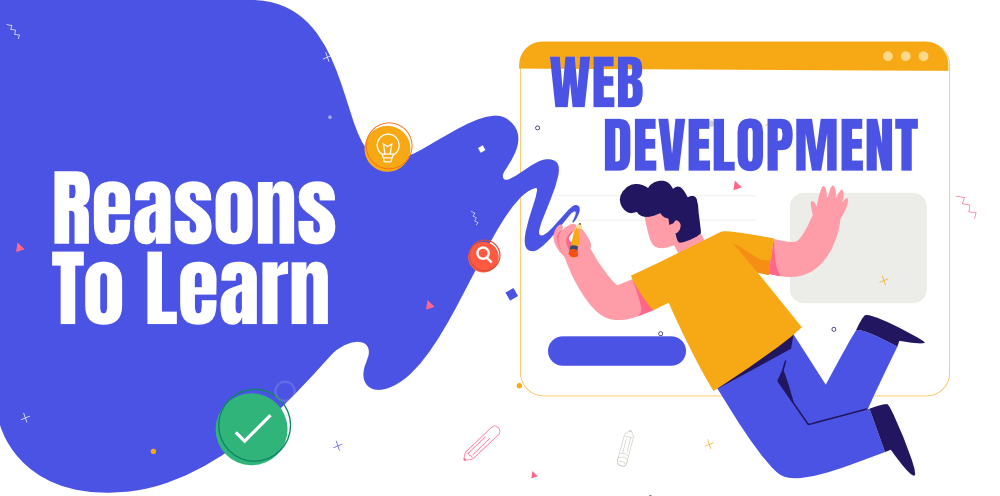Web development has become a highly sought-after profession in today’s digital age, bringing lucrative career prospects and the chance to influence the online world. However, the perceived high expenses involved with obtaining this talent deter many would-be developers. The fact is that you don’t have to break the bank to learn web programming. Learning web development is now easier than ever thanks to the quantity of free materials on the internet. The universe of free web development resources will be explored in this article, and we’ll show you how to use these beneficial resources to learn web development.

The Learning Landscape
There are a ton of excellent tutorials and courses available online that can educate novices web development. Students may receive organized education in HTML, CSS, and JavaScript on websites like Codecademy, Coursera, and Khan Academy. These programs guide students through practical assignments and activities. You may put the knowledge you gain from taking these courses which often feature interactive coding environments to use in practical settings.
1. Online Courses and Tutorials
Many excellent online tutorials and courses are easily accessible online, making it possible for novices to learn web programming. Websites like Codecademy, Coursera, and Khan Academy provide systematic instruction in HTML, CSS, and JavaScript that directs students through exercises and real-world projects. You may apply what you’ve learned in real-time by enrolling in these courses, which usually include interactive coding environments.
2. Open Source Documentation
Web development frameworks like Bootstrap and libraries like jQuery have rich documentation because of the power of open-source communities. They make it simpler to integrate these technologies into your projects since they not only give instructions on how to utilize them, but also examples and best practices.
3. YouTube Video Channels
YouTube is a treasure trove of video tutorials for every skill level. The Net Ninja, freeCodeCamp, Traversy Media, and more channels specialize in teaching web development. These channels offer information on everything from fundamental HTML and CSS to sophisticated JavaScript frameworks.
4. Interactive Coding Platforms
Platforms like freeCodeCamp offer a hands-on approach to learning web development. You can work on real projects for nonprofit organizations, gaining practical experience while contributing to meaningful causes. These platforms also provide a sense of community through forums and discussions.
5. Blogs and Online Communities
Experienced web developers’ blogs frequently offer insights, advice, and shortcuts that might improve your learning process. There are forums on websites like Stack Overflow and Reddit where you may ask questions, get answers, and have debates with subject matter experts and other students.
Crafting Your Learning Path
As you dive into the sea of free web development resources, it’s crucial to have a structured learning path. Select a programming language to start, such as HTML, and work your way up to more complex concepts. Think about the following actions:
1. Foundation Building
Begin by learning HTML to understand the structure of web content. This is where your web development journey truly begins. Follow this up with CSS to learn how to style your web pages and make them visually appealing.
2. Introducing Interactivity
Once you feel confident using HTML and CSS, start learning JavaScript. This language empowers you to add interactivity and dynamic elements to your web pages. Explore JavaScript libraries like jQuery to simplify complex tasks.
3. Backend Development
Expand your skills by delving into backend technologies. Learn about server-side scripting languages like PHP, Python, or Node.js. These languages enable you to create dynamic and data-driven web applications.
4. Frameworks and Libraries
Investigate web development frameworks like Angular, React, or Vue.js as you advance. These frameworks make the development process more efficient and let you create more intricate apps.
5. Building Projects
Perfectionism is attained via practice. Create your own projects to put what you’ve learnt into practice. Establish a personal website, a showcase of your work, or even brief interactive online applications. Your understanding and confidence will both be strengthened by this practical experience.
Conclusion
There is no need to pay a high sum to learn web programming. Anyone who is dedicated and eager to learn can start their road toward becoming a skilled web developer thanks to the wealth of free resources that are readily available online. The road to understanding web development has never been easier thanks to online classes, interactive platforms, open-source documentation, and encouraging communities. So, roll up your sleeves, embrace the wealth of free resources, and take the first steps to learn web development. Your future in the digital landscape awaits.

